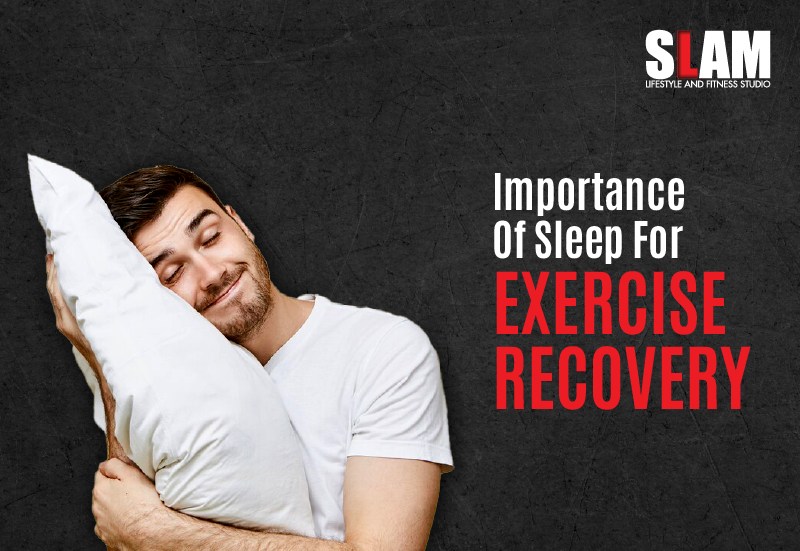Introduction
Fasting has emerged as a highly efficient and adaptable method in the quest for effective weight loss and enhanced health. Fasting has a certain charm because it is flexible and offers a variety of approaches to fit different interests and ambitions.
It’s not just a one-size-fits-all answer; rather, it’s a trip where your chosen route determines the outcome. Finding a fasting strategy that suits your particular objectives and way of life is crucial.
This blog begins a thorough investigation of four different fasting styles, each with its own benefits and difficulties.
We will explore the nuances of each strategy, from the regimented practices of intermittent fasting to the severe dedication of water fasting, the flexible nature of time-restricted eating, and the discipline of alternate-day fasting.
In order to ensure a successful and long-lasting weight loss journey, the goal is to arm you with the knowledge you need to make an informed decision on the fasting approach that best complements your unique goals. So, let’s explore the realm of fasting and find out how to become healthier.
Intermittent Fasting

Cycles between eating and fasting times are the foundation of the well-liked and adaptable weight loss strategy known as intermittent fasting (IF). When you eat is just as important as what you consume.
There are various ways to practice intermittent fasting, but the 16/8 approach and the 5:2 method are two of the most popular.
The 16/8 technique entails an 8-hour window for eating followed by a 16-hour period of fasting. You might eat between 12 PM and 8 PM one day and then fast between 8 PM and 12 PM the following.
The 5:2 Method involves eating normally for five days a week and limiting your calorie intake to 500–600 calories on the other two days that are not consecutive.
There are many advantages to intermittent fasting. It can raise metabolism, increase fat burning, and lower calorie intake, all of which contribute to weight loss. Additionally, it might promote heart health and assist in the control of blood sugar levels.
Pick an intermittent fasting strategy that fits your schedule and way of living to get started. Extend your fasting window gradually to give your body time to adjust. In addition to prioritising wholesome, balanced meals throughout your eating windows, remember to stay hydrated during fasting.
Make it a regular, be consistent, and think about contacting a doctor, especially if you have any underlying medical issues. When done correctly, intermittent fasting can be a successful and long-lasting method of weight loss.
Water Fasting

A type of fasting called a water fast involves ingesting nothing but water for a long period of time, usually between 24 hours and several days. It is an extreme type of fasting; thus, it should be done with caution and thought.
Simple rules govern water fasting: throughout the fasting time, consume just water and refrain from any food and caloric beverages. Black coffee or herbal teas may also be consumed by certain people, but it’s crucial to keep your attention firmly fixed on calorie counting.
Weight loss, better insulin sensitivity, and autophagy—a cellular cleansing process—are all potential advantages of water fasting. It is not without difficulties and things to think about, though.
Long-term water fasts can have negative effects on people with specific medical conditions, including nutritional shortages, muscle loss, electrolyte imbalances, and severe impacts on the body.
It’s important to complete a water fast, safely and effectively if you decide to do so. Before attempting lengthier fasts, start with shorter ones, such as 24–48 hours.
Drink plenty of water and pay attention to your body’s signals to break the fast if you feel extreme discomfort or signs of distress.
Always keep an eye on your health, especially if you’re thinking about going on an extended fast. When done safely and carefully, water fasting can be a potent tool for detoxification and weight loss.
Alternate-Day Fasting
A type of intermittent fasting called alternate-day fasting (ADF) cycles between days when you eat normally and days when you severely restrict your caloric intake. The basic idea of this strategy is the same despite its many variations: eat normally one day, then drastically cut calories the next.
One typical ADF strategy entails following a regular diet on “eating” days while capping calorie intake at 500 or fewer on “fasting” days. Some people might prefer a more flexible option that allows them to consume up to 25% of their regular caloric intake on fasting days.
Alternate-day fasting may provide advantages, including better insulin sensitivity and weight loss. Additionally, it may promote conscious eating habits and eventually result in lower calorie intake. The intense intensity of fasting days, which can cause feelings of hunger and irritation, makes ADF difficult for some people. Before beginning an ADF program, it is advised to speak with your doctor because several medical problems may exclude its use.
Start introducing fasting days gradually to help your body get used to an alternate-day regimen, and pay attention to how your body reacts. To achieve your daily nutritional requirements, drink enough water when fasting and eat meals that are high in nutrients while eating. The success of ADF depends on consistency, so establish a routine that aligns with your lifestyle and health goals.
Time-Restricted Eating
Time-restricted eating (TRE) is an intermittent fasting technique in which eating is limited to a certain time period during the day, and fasting is practised during other hours. The 12/12 strategy, which calls for eating only during a 12-hour window and fasting for the remaining 12 hours, is one of the most popular TRE strategies.
Your eating window can change when you practice time-restricted eating based on your schedule and preferences. Some people may choose a 16/8 strategy, where they eat for 8 hours and fast for 16, or even shorter periods, such as 18/6. The secret is to create a regimen that fits in with your regular activities.
Eating within a set window of time has advantages like better digestion, better control of blood sugar levels, and improved metabolic health. The limited eating window can also help with weight loss by automatically lowering daily caloric consumption.
Start by progressively modifying your meal window to your preferred timeframe in order to implement TRE into your regular routine sustainably. Within that time frame, prioritise balanced, nutrient-rich meals and make sure to stay hydrated while fasting. In order to be consistent, try to keep a regular routine that works for your lifestyle. Before implementing TRE into your regimen, like with any fasting technique, speak with a doctor if you have any underlying medical concerns.
| Principle | Caloric Intake | Benefits | Challenges | |
| Intermittent Fasting | Cycles between eating and fasting periods. | Regular during the eating window, fasting during the fasting window. | Weight loss, improved metabolism, blood sugar control, cellular repair. | Initial hunger pangs, adjustment period. |
| Water Fasting | Involves consuming only water for an extended period. | No caloric intake. | Weight loss, autophagy (cellular cleansing), and potential mental clarity. | Severe hunger and fatigue during extended fasts. |
| Alternate-Day Fasting | Alternates between regular eating days and fasting days with limited calorie intake. | Regular on eating days, limited on fasting days (e.g., 500-600 calories). | Weight loss, improved insulin sensitivity, and mindful eating habits. | Intense hunger on fasting days is challenging for some individuals. |
| Time-Restricted Eating | Eating is confined to a specific window while fasting during the rest of the day. | Regular during the eating window, fasting during fasting hours. | Improved digestion, blood sugar regulation, and potential weight loss, metabolic health benefits. | May require discipline to adhere to the eating window. |
SLAM Fitness

The Slam Fitness Studio is a haven for anyone looking for efficient ways to lose weight. With a group of committed and knowledgeable trainers, we offer specialised programs to assist clients in achieving their fitness objectives. These trainers provide expert advice, encouraging and educating customers on optimal form, diet, and long-term weight loss tactics.
We establish a friendly environment that encourages drive and responsibility. The instructors at Slam Fitness Studio are your partners as you work toward a better, more confident version of yourself. Whether you are a beginner or a seasoned exercise enthusiast, our knowledge guarantees that your weight reduction journey is effective, secure, and fruitful.
Takeaway
There are many different ways to fast, each with its own advantages. Time-restricted eating, alternate-day fasting, intermittent fasting, and water fasting can all be useful weight loss methods. However, it’s imperative to speak with a medical expert before beginning any fasting regimen, taking into account certain health issues.
The technique of choice should fit your lifestyle and goals, and for best results, combine fasting with a balanced, healthy diet and frequent exercise. Keep in mind that the trip to a healthier you should be undertaken with awareness and care, with the goal of achieving not only weight loss but also general well-being.
FAQs
- Which fasting method is best for weight loss?
Depending on personal tastes and needs, different people may respond to fasting differently to lose weight. A well-liked and flexible option, intermittent fasting offers a variety of approaches to accommodate varied lifestyles. Many people find it useful because it encourages a calorie deficit. The best approach, nevertheless, will be sustainable and in line with your objectives. The best fasting strategy for your weight reduction journey can be determined by consulting a healthcare practitioner.
- What are the 4 stages of fasting?
The four stages of fasting are:
Fed State: Occurs right after eating.
Early Fasting: Begins after 12 hours without food.
Deep Fasting: Occurs after 48 hours without food.
Starvation State: Extends beyond 72 hours, when the body relies on stored energy.
- What is 4 4 intermittent fasting?
The “Every-Other-Day Fasting” approach, sometimes referred to as 4:4, alternates between fasting and eating windows. This method involves eating regularly for the first 24 hours, then fasting for the next 24 hours (4:4). This pattern continues, allowing for days with normal food interspersed with days with a total fast. It’s an extended kind of intermittent fasting that might lead to weight loss and better insulin sensitivity.
- What is the 4 3 fasting diet for weight loss?
The 4:3 fasting diet, also known as the “Fast Diet” or “Modified Alternate-Day Fasting,” calls for eating normally for four days of the week and limiting calorie consumption to around 25% of the usual intake (about 500–600 calories) on the other three days that are not consecutive. It is a type of intermittent fasting that promotes better metabolic health and weight loss.
- What is Stage 1 fat burning?
The body predominantly uses easily available energy sources, such as glycogen stored in the muscles and liver, during stage 1 fat burning. The body is transitioning into a fasting or calorie deficit state during this stage, and it starts to use stored glycogen as fuel before moving into more intensive fat-burning stages.



